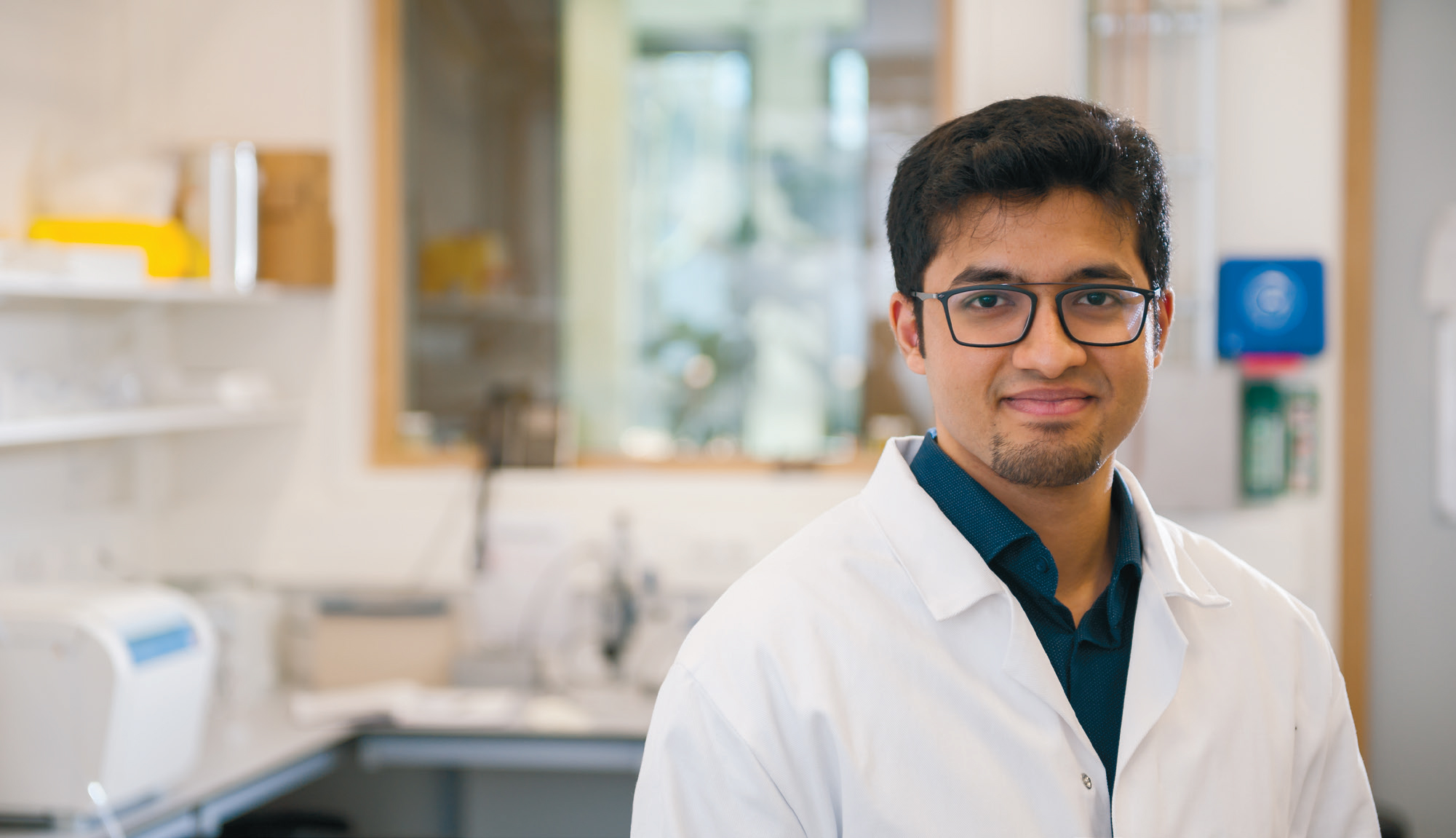
When Rifat Kamarudheen was in high school in Kerala, India, it was predicted that nanotechnology would change the world. He wanted to be part of this. In July 2020, he defended his PhD thesis on illuminated nanoparticles. Kamarudheen now works at EPFL, Switzerland, on a similar topic.
When he arrived at DIFFER, Kamarudheen found an empty lab: “My supervisor Andrea Baldi had just started his research at DIFFER. I felt lucky and was eager to learn how to organize a new lab and how to set up a research group.”
Plasmon-driven chemistry
The grand idea behind Kamarudheen’s research is to use a phenomenon called localized surface plasmon resonances to drive chemical reactions, for example to reduce CO2 as an important step in making sustainable chemicals. These plasmons arise when nanoparticles of gold, silver, and copper are illuminated. But there is still a lot of controversy surrounding the activation mechanism of plasmon-driven chemistry. No one knows exactly what happens after the nanoparticles are illuminated: they may scatter light to generate electromagnetic hotspots on their surface, release hot charge carriers like electrons, or heat up the nanoparticle in a photothermal process. Often, all these processes occur simultaneously and at timescales less than a few nanoseconds, which makes it challenging to distinguish the contributions of each process. “My aim was to quantify these different phenomena. It is important to know the mechanism of the reaction you are studying.”
Green gold turning orange
His favorite chapter of his thesis is the last one, where he was able to control the growth of an individual nanoparticle. “These experiments were amazing. I could see the individual nanoparticles under an optical microscope. For example, gold nanoparticles would look like green dots, and after performing a chemical reaction, I would see them turn orange or yellow.” He was often in a dark room alone, but he was enjoying every minute of it. “What amazed me most was that I was able to precisely control chemical reactions to assemble hierarchical structures at a nanoscale level. I was playing with LEGO at the nanoscale level.”
Text Bastienne Wentzel. This interview is published in the DIFFER Annual Report 2020.
Go to the News page.